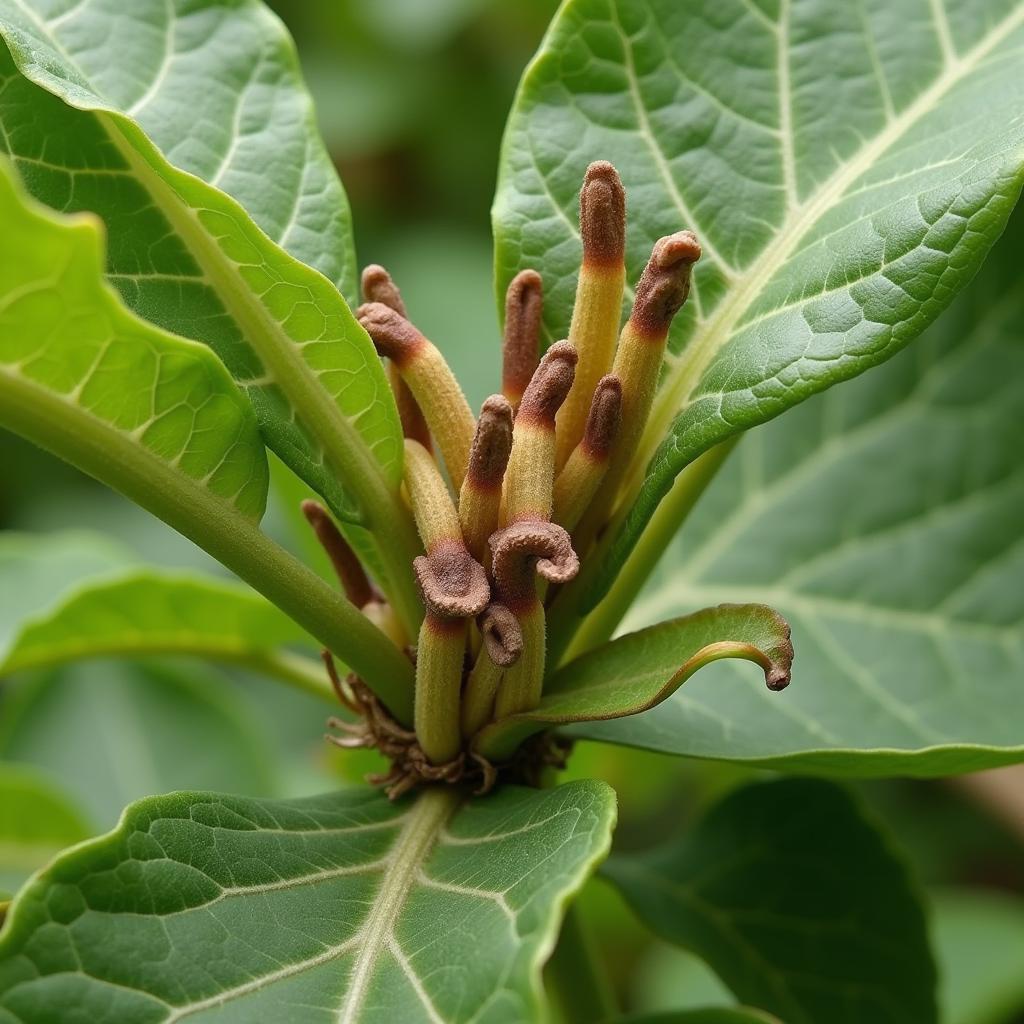The term “Zombie Flower” might conjure up images of flesh-eating plants from a horror movie, but in reality, it describes a fascinating and slightly eerie phenomenon in the plant world. This captivating term refers to the intriguing process where a parasitic fungus hijacks a plant’s reproductive system, essentially turning it into a “zombie” that serves the fungus’s needs.
What Exactly is a Zombie Flower?
This isn’t about flowers rising from the graveyard. Instead, imagine a fungus, often from the genus Puccinia, infiltrating a healthy plant, typically a flowering plant like a daisy or sunflower. This parasitic fungus, invisible to the naked eye in its early stages, grows within the plant’s tissues, slowly taking over its internal machinery.
 Close-up of a plant infected by zombie flower fungus
Close-up of a plant infected by zombie flower fungus
The Puppet Master: How the Fungus Controls the Plant
The parasitic fungus, in its quest to reproduce, employs a sinister strategy. It manipulates the plant’s hormones, effectively hijacking its reproductive system to serve its own purpose. The plant, under the fungus’s spell, undergoes a dramatic transformation.
- Distorted Appearance: The plant’s leaves might become discolored, twisted, or develop strange growths called “pseudoflowers.” These pseudoflowers, often mistaken for bizarre blooms, are actually fungal structures designed to produce and release fungal spores.
- Altered Behavior: The infected plant, now a mere puppet to the fungus, might start releasing chemicals that attract pollinators. These unsuspecting insects, tricked by the plant’s altered signals, end up carrying fungal spores instead of pollen, further spreading the infection.
- Sterility and Death: The plant, its resources drained and its life cycle hijacked, becomes incapable of reproducing itself. It eventually withers and dies, becoming a casualty in the fungus’s reproductive cycle.
Examples of Zombie Flowers in Nature
The “zombie flower” phenomenon, while seemingly plucked from a science fiction novel, is a testament to the fascinating and sometimes macabre relationships that exist in nature. Here are some striking examples:
- Rust Fungi and Their Host Plants: Rust fungi are notorious for creating “pseudoflowers” on their host plants. These structures mimic the appearance of real flowers, attracting insects that help disperse the fungus’s spores.
- Entomophthora Muscae and Flies: This parasitic fungus infects flies, manipulating their behavior before ultimately killing them. The infected flies, in their final act, climb to high vantage points, where the fungus erupts from their bodies, showering spores onto unsuspecting victims below.
 A cluster of "pseudoflowers" on a plant manipulated by a parasitic fungus
A cluster of "pseudoflowers" on a plant manipulated by a parasitic fungus
The Ecological Impact of Zombie Flowers
While the “zombie flower” phenomenon might seem like a horror story for plants, it plays a role in maintaining the balance of ecosystems.
- Population Control: Parasitic fungi that create zombie flowers can help regulate plant populations, preventing any one species from becoming too dominant.
- Nutrient Cycling: The death and decomposition of infected plants contribute to nutrient cycling, releasing valuable resources back into the environment.
Conclusion
The “zombie flower” phenomenon offers a glimpse into the complex and often bizarre relationships between different organisms in nature. While it might seem like something out of a horror movie, it’s a reminder of the incredible power of adaptation and survival in the natural world.





